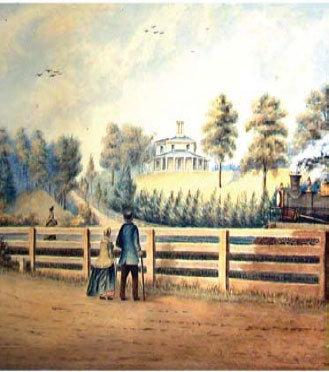Toronto city tours offered by Global Alliance allow our clients to experience Canada’s largest metropolis in comfort from the seat of one of our luxurious vehicles with an experience chauffeur as a guide, with the further option to be dropped off to explore Toronto’s many attractions on their own. Today, three of Toronto’s historic museums outside the central downtown will be discussed.
Spadina Museum
In close vicinity to the better-known and more frequently visited Casa Loma, Spadina Museum is another historic manor house that is also kept preserved as a time capsule of Toronto’s past by the city. Less ostentatious than Henry Pelatt’s nearby crenelated castle, the home at 285 Spadina Road was begun in 1866 by wealthy Toronto banker James Austin on the site of an older house dating back to 1818. The house was completed around 1913, and its long period of construction means that it reflects multiple architectural and interior design movements and fashions, from Victorian and Edwardian elements through later touches of Art Deco and Art Nouveau. Its six-acre gardens and restored period greenhouse are also of particular interest. Open to the public as a reasonably-priced museum since 1984, Spadina House also hosts events, children’s programs, and can be rented for functions.
Black Creek Pioneer Village
 West of York University near Jane and Steeles, Black Creek Pioneer Village is a heritage park recreating rural life in 19th-century rural Ontario. A popular destination for school field trips and children of all ages, Black Creek Pioneer Village has been operating since 1960. Historical interpreters and re-enactments bring the past of the region to life, and many local craftsman and artisans run shops and perform demonstrations on the premises. Many of the historic buildings were moved from other locations around the province, and some of the Stong family buildings on the site are among the oldest in the city. Events and programs operate year-round, with Halloween-themed parties and ghost walks being a current draw.
West of York University near Jane and Steeles, Black Creek Pioneer Village is a heritage park recreating rural life in 19th-century rural Ontario. A popular destination for school field trips and children of all ages, Black Creek Pioneer Village has been operating since 1960. Historical interpreters and re-enactments bring the past of the region to life, and many local craftsman and artisans run shops and perform demonstrations on the premises. Many of the historic buildings were moved from other locations around the province, and some of the Stong family buildings on the site are among the oldest in the city. Events and programs operate year-round, with Halloween-themed parties and ghost walks being a current draw.
Colborne Lodge

Colborne Lodge painted in 1865
A Regency-style cottage built in the 1830s, Colborne Lodge was built by and for John George Howard, a prominent local architect and engineer. The Lodge stood amidst 165 acres of land which Howard deeded to the City of Toronto upon his death in 1873, a deed which was the genesis of High Park. Operated as a museum by the city, Colborne Lodge contains many of the Howard’s original furnishings as well as some of the renaissance man’s artworks. Be sure not to miss the gardens, either, which include a cairn to Howard’s memory whose gate came originally from St. Paul’s Cathedral in London, England and was designed by the famous architect Christopher Wren. Children’s camps and day programs operate during the summer.
